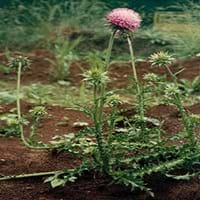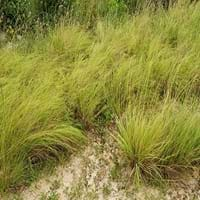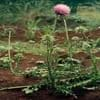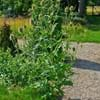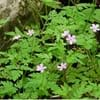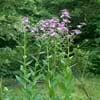Life Span
Biennial
Perennial
Type
Bulb, Flowering Plants
Grass
Origin
World/Pandemic, Europe, Asia
Eastern Africa, Southern Africa
Types
Crocus tommasinianus, Crocus etruscus, Crocus vernus, Crocus cambessedesii
Robusta blue, Robusta green, Curvula
Habitat
gardens, Grassland, open Woodlands, orchards, Pastures, tropical environments
Cultivated Beds
USDA Hardiness Zone
2-10
7-13
AHS Heat Zone
10 - 1
12 - 10
Sunset Zone
21,22
4, 5, 6, 7, 8, 9, 10, 11, 12, 13, 14, 15, 16, 17, 18, 19, 20, 21, 22, 23, 24
Habit
Upright/Erect
Clump-Forming
Flower Color
Red, Violet
Gray, Lavender
Flower Color Modifier
Bicolor
Bicolor
Fruit Color
Not Available
Gray Green, Silver
Leaf Color in Spring
Green, Dark Green
Green, Dark Green
Leaf Color in Summer
Dark Green
Light Green
Leaf Color in Fall
Dark Green
Dark Green, Bronze
Leaf Color in Winter
Light Green
Yellow, Dark Green, Bronze
Leaf Shape
Ovate
Grass like
Plant Season
Spring, Summer, Winter
Summer, Fall, Winter
Sunlight
Full Sun, Partial Sun
Full Sun
Growth Rate
Very Fast
Fast
Type of Soil
Clay, Loam, Sand
Loam, Sand
The pH of Soil
Acidic, Neutral, Alkaline
Acidic, Neutral, Alkaline
Soil Drainage
Well drained
Well drained
Bloom Time
Spring, Late Spring, Early Summer, Summer
Late Summer, Early Fall
Tolerances
Pollution, Drought, Salt, Soil Compaction
Drought
Where to Plant?
Container, Ground
Ground
How to Plant?
Seedlings
Seedlings
Plant Maintenance
Low
Medium
Watering Requirements
Average Water Needs, Do Not over Water, Never Over-water, Requires regular watering
Average Water Needs
In Summer
Lots of watering
Lots of watering
In Spring
Moderate
Moderate
In Winter
Average Water
Average Water
Soil pH
Acidic, Neutral, Alkaline
Acidic, Neutral, Alkaline
Soil Type
Clay, Loam, Sand
Loam, Sand
Soil Drainage Capacity
Well drained
Well drained
Sun Exposure
Full Sun, Partial Sun
Full Sun
Pruning
Prune to stimulate growth, Remove damaged leaves, Remove dead leaves, Remove deadheads
Cut back old stems to the ground
Fertilizers
Nitrogen, Phosphorous, Potassium, Requires high amount of nitrogen
Requires high amount of nitrogen
Pests and Diseases
Insects, Red blotch
No serious insect or disease problems
Plant Tolerance
Not Available
Drought
Flower Petal Number
Not Available
Single
Foliage Texture
Coarse
Fine
Foliage Sheen
Glossy
Matte
Attracts
Flying insects
Not Available
Allergy
Diarrhea, Nausea, Vomiting
conjunctivitis, Pollen
Aesthetic Uses
Beautification, Showy Purposes
Borders, Showy Purposes
Beauty Benefits
Not Available
Not Available
Environmental Uses
Air purification, Food for insects
Erosion control
Medicinal Uses
Unknown, Unknown
No Medicinal Use
Part of Plant Used
Stem
Leaves, Seeds
Other Uses
Decoration Purposes
Used as a grain, Used to make baskets, brooms, hats
Used As Indoor Plant
No
No
Used As Outdoor Plant
Yes
Yes
Garden Design
Not Available
Bedding Plant, Container, Edging, Groundcover, Mixed Border, Rock Garden / Wall
Botanical Name
CARDUUS nutans
ERAGROSTIS curvula
Common Name
Musk Thistle, Nodding Thistle
Weeping Lovegrass
In Hindi
कस्तूरी थीस्ल
Weeping Lovegrass
In German
Nickende Distel
Weinend lovegrass
In French
Musk Thistle
Weeping lovegrass
In Spanish
Cardo de almizcle
Pasto llorón
In Greek
musk Thistle
κλάμα Lovegrass
In Portuguese
musk Thistle
chorando lovegrass
In Polish
Musk Thistle
Płacząca Lovegrass
In Latin
Carduus MOSCHUS
Plorans Lovegrass
Phylum
Magnoliophyta
Magnoliophyta
Class
Magnoliopsida
Liliopsida
Order
Asterales
Cyperales
Family
Asteraceae
Poaceae
Clade
Angiosperms, Asterids, Eudicots
Angiosperms, Commelinids, Monocots
Tribe
Cynareae
Eragrostideae
Subfamily
Carduoideae
Chloridoideae
Number of Species
Not Available
Not Available
Season and Care of Musk Thistle and Weeping Lovegrass
Season and care of Musk Thistle and Weeping Lovegrass is important to know. While considering everything about Musk Thistle and Weeping Lovegrass Care, growing season is an essential factor. Musk Thistle season is Spring, Summer and Winter and Weeping Lovegrass season is Spring, Summer and Winter. The type of soil for Musk Thistle is Clay, Loam, Sand and for Weeping Lovegrass is Loam, Sand while the PH of soil for Musk Thistle is Acidic, Neutral, Alkaline and for Weeping Lovegrass is Acidic, Neutral, Alkaline.
Musk Thistle and Weeping Lovegrass Physical Information
Musk Thistle and Weeping Lovegrass physical information is very important for comparison. Musk Thistle height is 90.00 cm and width 30.00 cm whereas Weeping Lovegrass height is 90.00 cm and width 90.00 cm. The color specification of Musk Thistle and Weeping Lovegrass are as follows:
Musk Thistle flower color: Red and Violet
Musk Thistle leaf color: Green and Dark Green
Weeping Lovegrass flower color: Gray and Lavender
- Weeping Lovegrass leaf color: Green and Dark Green
Care of Musk Thistle and Weeping Lovegrass
Care of Musk Thistle and Weeping Lovegrass include pruning, fertilizers, watering etc. Musk Thistle pruning is done Prune to stimulate growth, Remove damaged leaves, Remove dead leaves and Remove deadheads and Weeping Lovegrass pruning is done Cut back old stems to the ground. In summer Musk Thistle needs Lots of watering and in winter, it needs Average Water. Whereas, in summer Weeping Lovegrass needs Lots of watering and in winter, it needs Average Water.
